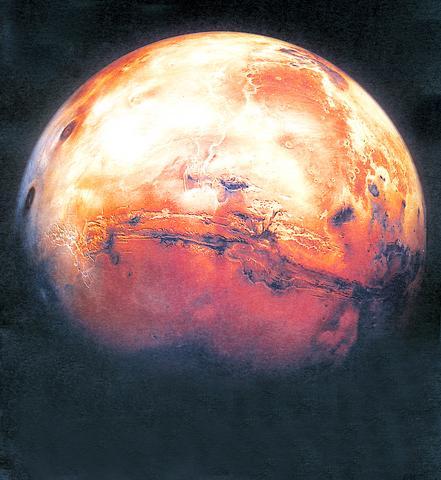The National Geographic Channel will will broadcast globally a feature-length special about the Mars exploration rovers on Sunday, Jan 11 at 9pm. The program will feature never-before-seen footage of the mission's preparation and, if all goes to plan, groundbreaking pictures from Mars itself.
Launched toward Mars in June and July this year, the two golf cart-sized rovers named Spirit and Opportunity, will touch down in early January as part of an on-going NASA mission to determine whether or not the planetary environment of Mars can, or ever did, support life.

PHOTO COURTESY OF NATIONAL GEOGRAPHIC CHANNEL
Managed by the Jet Propulsion Laboratory, a division of California's Institute of Technology for NASA's Office of Space Science, the Mars Exploration Rover project is much larger than 1997's Mars Pathfinder and scientists hope to gather more information than ever before about the Red Planet.
The first rover to land on the planet's surface will be Spirit, which will land on Jan. 3 near the center of the Gusev Crater, a place where NASA scientists believe there may have once been a giant lake. Then, three weeks later Opportunity will touch down at the Meridiani Planum, a region that contains huge deposits of exposed mineral that could have been formed under watery conditions.
Landing, however, is only the first step in the three-month Mars exploration project. It will take a week for each rover to unfold itself, rise to its full height and begin scanning its surroundings. Using images and measurements that they will receive daily from the rovers, scientists will command the vehicles to travel to rocks and soil targets of interest to evaluate their composition and texture on microscopic scales.
During their 12 weeks of activity each rover is expected to traverse an area the size of 10 soccer pitches.

On April 26, The Lancet published a letter from two doctors at Taichung-based China Medical University Hospital (CMUH) warning that “Taiwan’s Health Care System is on the Brink of Collapse.” The authors said that “Years of policy inaction and mismanagement of resources have led to the National Health Insurance system operating under unsustainable conditions.” The pushback was immediate. Errors in the paper were quickly identified and publicized, to discredit the authors (the hospital apologized). CNA reported that CMUH said the letter described Taiwan in 2021 as having 62 nurses per 10,000 people, when the correct number was 78 nurses per 10,000

As we live longer, our risk of cognitive impairment is increasing. How can we delay the onset of symptoms? Do we have to give up every indulgence or can small changes make a difference? We asked neurologists for tips on how to keep our brains healthy for life. TAKE CARE OF YOUR HEALTH “All of the sensible things that apply to bodily health apply to brain health,” says Suzanne O’Sullivan, a consultant in neurology at the National Hospital for Neurology and Neurosurgery in London, and the author of The Age of Diagnosis. “When you’re 20, you can get away with absolute

May 5 to May 11 What started out as friction between Taiwanese students at Taichung First High School and a Japanese head cook escalated dramatically over the first two weeks of May 1927. It began on April 30 when the cook’s wife knew that lotus starch used in that night’s dinner had rat feces in it, but failed to inform staff until the meal was already prepared. The students believed that her silence was intentional, and filed a complaint. The school’s Japanese administrators sided with the cook’s family, dismissing the students as troublemakers and clamping down on their freedoms — with

As Donald Trump’s executive order in March led to the shuttering of Voice of America (VOA) — the global broadcaster whose roots date back to the fight against Nazi propaganda — he quickly attracted support from figures not used to aligning themselves with any US administration. Trump had ordered the US Agency for Global Media, the federal agency that funds VOA and other groups promoting independent journalism overseas, to be “eliminated to the maximum extent consistent with applicable law.” The decision suddenly halted programming in 49 languages to more than 425 million people. In Moscow, Margarita Simonyan, the hardline editor-in-chief of the